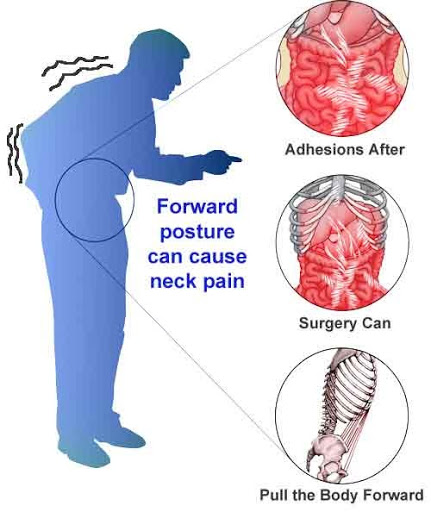Effective Ways to Repel Wasps in Your Garden This Spring 2025
As the warmer weather approaches, many garden enthusiasts look forward to the beauty of blooming flowers and the joy of outdoor activities. However, with the arrival of spring also comes the potential annoyance of wasps. These insects can be a nuisance, especially when you have outdoor dining or leisure activities planned. Understanding how to repel wasps effectively can not only enhance your gardening experience but also ensure safety for you and your family.
This article will delve into various methods for keeping wasps at bay, from natural remedies to DIY solutions. We will explore homemade wasp sprays, effective traps, and essential oils that deter these insects. Additionally, we will look at wasp behavior, the signs of an infestation, and practical tips for preventing wasps from invading your outdoor spaces. By the end of this guide, you'll have a comprehensive toolkit to manage wasps and enjoy a peaceful spring in your garden.
Key takeaways will include practical applications for wasp repellents, insights on wasp behavior, and simple preventive measures to enhance your outdoor safety. Let’s dive in!
Understanding Wasp Behavior and Wasp Infestations
Before diving into effective methods to repel wasps, it’s crucial to understand their behavior and the factors that contribute to infestations. Wasps are social insects that typically build nests in sheltered areas, making gardens an attractive location. They are drawn to food sources, especially sugary drinks and protein-rich foods, which is why outdoor dining attracts them.
Wasp Nest Locations
Identifying where wasps build nests can significantly aid in controlling their presence. Wasps tend to construct nests in trees, under eaves, or inside wall cavities. Observing their flight patterns can help pinpoint hidden nests. Early identification allows for prompt removal or deterrent measures.
Signs of a Wasp Infestation
Look for increased wasp activity around your garden, especially in late summer when their populations peak. Signs of a problem include frequent sightings of wasps during meals, aggressive behavior, or nests formed near your living areas. Early intervention is essential to prevent infestations from escalating.
Wasp Lifecycle and Behavior in Spring
Understanding the wasp lifecycle can also guide your efforts in wasp control. In spring, queens emerge from hibernation to start new colonies. This is the prime time to implement measures that will deter them from establishing nests near your home. With the right knowledge, you can prevent wasp populations from growing throughout the season.
With an understanding of wasp behavior, we can move on to practical tips on how to repel wasps effectively.
Best Natural Wasp Deterrents to Use
Natural deterrents can offer a non-toxic alternative to chemical repellents. These methods can be both effective and environmentally friendly, making them a popular choice for garden safety.
Using Essential Oils for Wasp Control
Essential oils such as peppermint, clove, and geranium are potent natural repellents against wasps. Mixing a few drops of these oils with water in a spray bottle creates an effective wasp deterrent. Spray around your garden and high-traffic areas to keep wasps at bay.
Vinegar: A Powerful Repellent
Vinegar is another versatile ingredient to consider. A simple mixture of vinegar and water can be sprayed in areas where you notice wasp activity. The strong scent repels them, making this an easy and effective solution. An apple cider vinegar trap can also lure wasps in while eliminating them.
Citrus to Keep Wasps Away
Wasp-friendly plants are a common attractant, but citrus peels can work wonders as a repellent. Placing orange or lemon peels around your garden can naturally deter wasps due to their aversion to citrus scents.
Shifting our focus to more structured solutions, we’ll explore how to create functional traps that effectively catch and control wasp populations.
Creating Effective Wasp Traps Using Household Items
Wasp traps can serve as an efficient method to manage their presence in your garden. DIY traps can be created using simple household items, ensuring both cost-effectiveness and ease of use.
DIY Wasp Catcher Instructions
To make an effective DIY wasp trap, start with a plastic bottle. Cut the bottle in half and invert the top half into the bottom half. Fill the bottom with a mixture of sugar water and dish soap or vinegar. The sweet smell attracts wasps, while the soap traps them in the liquid.
Apple Cider Vinegar Trap Technique
Utilize apple cider vinegar to create an enticing trap. Fill a jar with about an inch of apple cider vinegar and add a few drops of dish soap. The scent draws wasps in while the soap breaks the surface tension, preventing their escape.
Commercial Wasp Traps: Pros and Cons
For those who prefer not to craft homemade traps, commercial wasp traps are available. While they can be effective, it’s crucial to choose traps that do not harm beneficial insects. Consider the pros and cons of each approach based on your personal preferences and environmental impact.
With traps in hand, we should now look into additional essential techniques and methods for wasp prevention and control.
Key Wasp Prevention Tips for Outdoor Spaces
In addition to repellents and traps, proactive measures can greatly reduce the risk of wasp infestations in your garden. Maintaining a wasp-free environment requires a proactive approach.
Keeping Food and Drinks Covered
Keeping food and drinks covered while dining outdoors is a primary step to discourage wasps. Food attracts them, and by minimizing exposure, you can enjoy your meals without frequent interruptions from these pests.
Identify and Seal Potential Nesting Areas
Inspect your property for potential nesting areas, such as under eaves or in dark corners, and seal any openings. This minimizes the chances of wasps establishing nests near your living spaces.
Plan Your Planting Wisely
Selecting wasp-repellent plants can also enhance your garden's natural defenses. Herbs like mint and thyme tend to deter wasps, while also being beneficial for your garden’s ecosystem.
As we discuss various techniques and lifestyle changes for managing wasps, let’s shift towards troubleshooting and addressing complications if wasps become a bigger issue.
Dealing with Wasp Infestations and Removal Strategies
If preventive measures do not keep wasps away, knowing how to safely remove them is crucial. Taking the right steps ensures safety for you and your family.
Identifying Wasp Nest Signs
Recognizing the signs of a wasp nest includes observing increased activity in specific areas, seeing adults entering and exiting, and spotting large, paper-like structures. If you notice these signs, it’s important to address the issue promptly.
Professional Help for Wasp Nest Removal
Sometimes, calling in professionals for wasp nest removal is the best option, particularly for large or difficult-to-reach nests. Professional pest control services can eliminate the threat efficiently while minimizing risks involved in DIY removal efforts.
Understanding Wasp Behavior During Nest Removal
If you choose to remove a nest yourself, it is crucial to understand wasp behavior before proceeding. They can become aggressive when their nests are threatened. Taking precautions such as wearing protective clothing and performing the removal at dusk or dawn when they are less active is vital for your safety.
With these strategies, you can take control of wasp populations in your garden effectively.
Wrapping Up: Your Guide to Wasp Control This Spring
Using these methods for wasp control in your garden ensures a safer spring season. From natural deterrents and effective traps to prevention tactics and removal strategies, you have a toolkit to manage wasps effectively. Always remember to consider the environmental impact of your pest control methods, opting for natural solutions when possible.
Using household items such as vinegar or citrus to repel wasps not only enhances outdoor safety but also supports a healthier garden ecosystem. For more tips and tricks on garden pest control, consider visiting this resource for further seasonal advice.
With proper planning and management, you can create a harmonious outdoor space that keeps annoying wasps at bay and allows you to fully enjoy your garden throughout the spring and beyond!
For a visual guide on some of these techniques, check out this helpful image demonstrating effective wasp deterrent solutions:

Looking to explore additional methods for pest control in your home garden? Visit this link for more insights and expert advice!
When it comes to managing wasp populations, knowledge is power—be proactive, stay informed, and enjoy your outdoor spaces safely!

